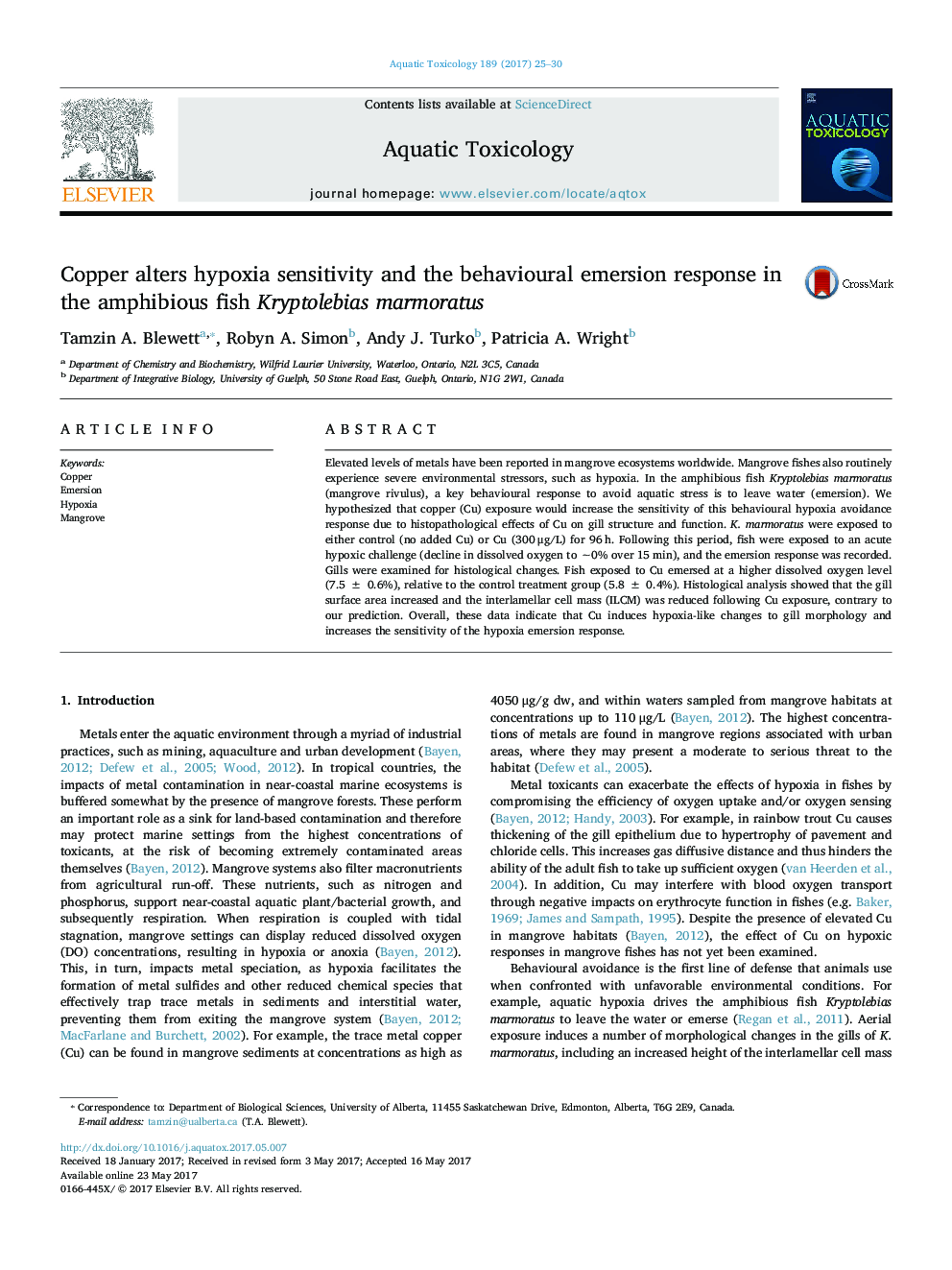| Article ID | Journal | Published Year | Pages | File Type |
|---|---|---|---|---|
| 5764170 | Aquatic Toxicology | 2017 | 6 Pages |
Abstract
Elevated levels of metals have been reported in mangrove ecosystems worldwide. Mangrove fishes also routinely experience severe environmental stressors, such as hypoxia. In the amphibious fish Kryptolebias marmoratus (mangrove rivulus), a key behavioural response to avoid aquatic stress is to leave water (emersion). We hypothesized that copper (Cu) exposure would increase the sensitivity of this behavioural hypoxia avoidance response due to histopathological effects of Cu on gill structure and function. K. marmoratus were exposed to either control (no added Cu) or Cu (300 μg/L) for 96 h. Following this period, fish were exposed to an acute hypoxic challenge (decline in dissolved oxygen to â¼0% over 15 min), and the emersion response was recorded. Gills were examined for histological changes. Fish exposed to Cu emersed at a higher dissolved oxygen level (7.5 ± 0.6%), relative to the control treatment group (5.8 ± 0.4%). Histological analysis showed that the gill surface area increased and the interlamellar cell mass (ILCM) was reduced following Cu exposure, contrary to our prediction. Overall, these data indicate that Cu induces hypoxia-like changes to gill morphology and increases the sensitivity of the hypoxia emersion response.
Related Topics
Life Sciences
Agricultural and Biological Sciences
Aquatic Science
Authors
Tamzin A. Blewett, Robyn A. Simon, Andy J. Turko, Patricia A. Wright,
